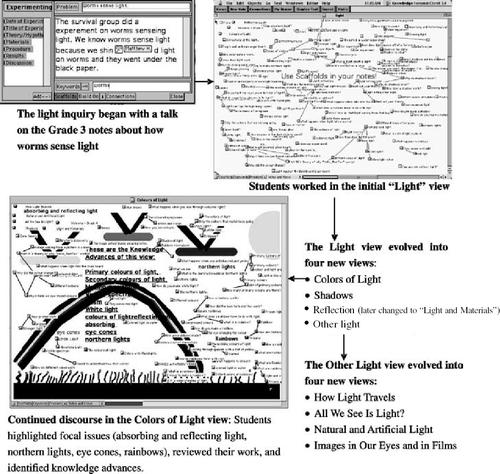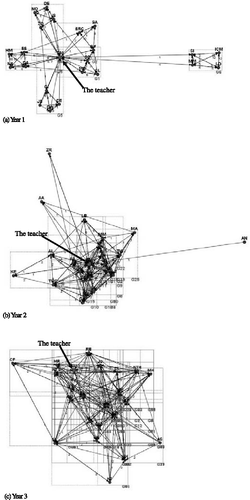Figures & data
FIGURE 1 The emergent process of knowledge building under the opportunistic-collaboration design. Each square icon in a view (e.g., Colors of Light) represents a note. A line between two notes represents a build-on.

TABLE 1 Specific Analyses of Collective Cognitive Responsibility Enacted by Students in the Online Space
TABLE 2 Coding Scheme for Ideas in Portfolio Notes
TABLE 3 Note-Linking Contacts Under the Three Designs
TABLE 4 Clique Analysis of Knowledge Forum Databases: Years 1, 2, and 3
FIGURE 2 Clique structures of the note-linking networks. A node represents a member identified with a code. A line between two nodes denotes a note-linking relation between two members, the direction and frequency of which are represented by the arrow and the value on the line. The more information flow a member carries, the more central he or she is displayed in a network.

TABLE 5 Freeman's Graph Centralization Measures of Note-Linking Networks Across 3 Years
FIGURE 3 Two types of questions raised in the teacher's notes in the Knowledge Forum database: Years 1, 2, and 3. “Questions for ideas” lead to teacher-initiated discourse, and “questions on ideas” deepen student-initiated inquiry.
